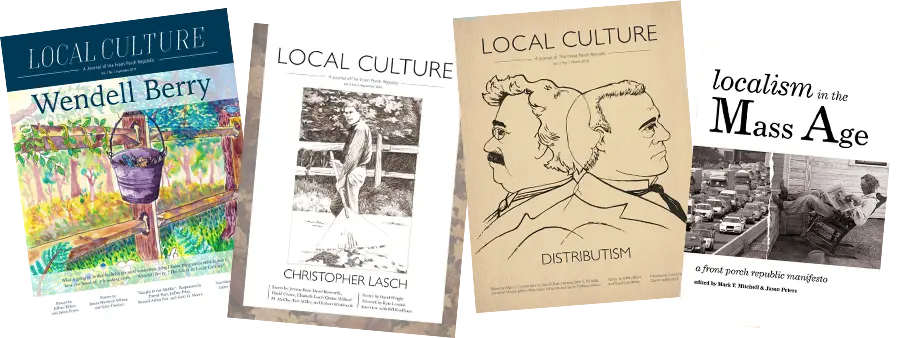The most memorable nugget I mined from counseling was this admonition: What doesn’t get talked out gets acted out. Perhaps it’s predictable, coming from a profession that charges by the hour for talk. I am what those in The Professions more broadly call a cynic because I regard the counsel of doctors, therapists, lawyers, management consultants, and other degreed experts with suspicion. Yet even I was surprised to learn that the psychiatrist Jonathan Shay, after counseling military combat veterans for years, concluded that talk therapy increases the likelihood of self-harm among the severely traumatized. Talking it out can lead, for some, to the worst kind of acting out.
This jarring reality is the starting point of Timothy Patitsas’s The Ethics of Beauty, a tome constructed in Q&A format that ranges across war, theology, marriage, gender, liturgical practices, architecture, and more. The linchpin connecting its variegated topics is Patitsas’s claim that the West has elevated Truth and Goodness above what was once understood to be their co-equal transcendental: Beauty. The consequences for the Church, art, and human relationships have been catastrophic.
Patitsas focuses on the traumatized because he believes that for an ethics of beauty to be sound, it must serve the least of us. Trauma victims, he insists, along with the spiritually downtrodden, need Beauty before unalloyed truth, or admonitions about how to live, can benefit them. Evaluating Shay’s work with veterans, Patitsas writes, “the initial focus of soul-healing must be on Beauty rather than on truth, on a living vision of a loving and crucified God, rather than on an autopsy of the broken self.” And further: “Truth-first methods can take the soul apart; they cannot put it back together.” Yet even as suicide and chemical dependence in the U.S. have increased in tandem with the number of certified mental health counselors, therapists since Freud have insisted, Patitsas observes, “that truth and not beauty be our first concern.”
But doesn’t Jesus himself say he is the Truth, and didn’t his apostle Paul tell us that we must be transformed by the renewing of our minds? Surely Christians have common cause with therapists in our quest to arrive at the full Truth: the God-revealed landscape upon which, yes, there is trauma and suffering, but also—if we can just open our eyes to it—redemption and healing. Given the human heart’s deceitfulness, and how frequently we conspire in our own destruction, shouldn’t we seek Truth first?
Patitsas doesn’t deny our need for Truth, but he says Beauty must precede it among the broken, because trauma functions like a theophany of Antichrist. The victim has encountered a world whose god is malevolent or, at the very least, indifferent. “Trauma results,” he writes, “from a very powerful encounter with ugliness, especially if that ugliness strikes us as a kind of revelation, disclosing to us the real truth about the world.” Such a revelation is a lie, of course, but it lodges in the heart too deeply to be talked out. Thus are trauma victims, Patitsas explains, “driven towards a point where their only communion, in a way, is with that false knowledge, that lie, that says God is unloving and my fellow man is my enemy.”
It’s easy for the untraumatized to grow impatient with such stuckness. Many of us have tried to talk sense into the alcoholic brother, the depressed teen, the chronically wayward spouse. Get over yourself, we tell them in various ways, and turn to Jesus. Stop wallowing in your past. Snap out of it. Patitsas indicates that for the traumatized, however, there is no past. The molestation, the death of a child, the sight of a comrade’s obliterated body—such horrors yank their victims into a dark mire. Into Hell. And only one man has ever left Hell under his own power.
So let’s ponder Hell. I’ve never witnessed what the explosion of an IED does to the human body at close range, but I have witnessed the slow-motion explosion that is a brainstem glioma inside the head of a three-year-old child. “It’s like someone threw sand into Jello,” is how a surgeon explained his inability to operate on my daughter. Now that was a truth-first approach. It wasn’t entirely accurate, however, because sand just sits there. Cancer swells. Grains become pebbles which would easily become rocks, given room to work. A little girl’s brainstem is, mercifully, a slender reed. But my God, what she endures as it splinters.
What shall we talk out, after horror? How God has a plan? That the suffering is now over? About the better place that some must pass through a meat grinder to reach?
What you talk about, if you’re honest, is how you hate God. How you will never trust him again. How you wish you had no other children, because the price of love in a world that does this to a child is too steep to bear.
Truthful words after trauma do not, at least in my experience, make things better. Sometimes words make things worse, Patitsas explains, because recounting your trauma is tantamount to re-entering Hell. The Orthodox Church, to which Patitsas and I both belong, teaches that during the time between his crucifixion and resurrection, Christ sundered Hell. Smashed the furniture, if you will. Our Holy Week hymns recount the demons lamenting their error as they realize they’ve allowed entry to the One Man who can set the prisoners free. One icon shows Christ standing on the smashed gates of Hades, the skeletal figure of Satan bound in the abyss below. With his outstretched hands Christ is pulling Adam and Eve from their tombs.
Few Christians would dispute the necessity of Christ’s intervention, so the question Patitsas asks us to consider is the pathway, for the traumatized, of salvation. A Truth-firster might argue that epiphanies can flow from bracing sermons, from heart-to-heart conversations—from words that confront the penitent with his errors, direct him how to live rightly, and inspire him to do so. Patitsas might reply that the logic and moral authority on which a Christian relies to discern Truth have no grounds in the life of the traumatized, because they have endured things that render logic irrelevant and trust in a loving God fruitless. Only Beauty can counteract the false theophany wrought by trauma. “Christians don’t repent,” he writes, “in order to get to heaven, rather, we repent . . . because heaven has come upon us.” The theophany of Antichrist must be displaced by the theophany of Christ.
Patitsas makes clear that for the healthy enough in spirit, the three transcendentals are mutually reinforcing. But for those scorched by encounters with Hell, Beauty is the first salve. The implications for how we do counseling, teaching—even friendship—are profound, and radical. Patitsas points to the Orthodox Divine Liturgy and contemplative prayer as the purest sources of healing Beauty. This doesn’t mean a Beauty-first path must pass through church doors; Thoreau found beauty after the gut-punch death of his brother in “the indescribable innocence and beneficence of Nature,” just as Wendell Berry praises the peace of wild things. But Liturgy, Patitsas says, embodies elements that counteract the trauma victim’s encounter with Antichrist. Instead of being divided from other humans by violence, the traumatized unite in worship, a collective act of beauty offered up to the Author of Beauty. Instead of man’s blood being spilled, God himself becomes the willing sacrifice. This is why Patitsas boldly claims that “the opposite of war is not peace.” Time, in other words, doesn’t heal all wounds. Trauma must be reversed, undone, upended by grace.
There’s much more in The Ethics of Beauty worth pondering: Patitsas’s meditations on what Beauty’s decline means to gender and marital relations, for example, breaks us out of the complementarian/egalitarian quagmire. Likewise for his reflections on the soullessness of modern, theory-driven architecture and the sterility of academic inquiry. A proper review would itself become a monograph, so I’ll end with the challenge Patitsas offers to people who, like many of us, lament the declining appetite for art among our fellow citizens. On the one hand, there is a suggestion that everyone thirsts for beauty, which would mean that all we Beauty-first artists can truly participate in the healing of souls, the healing of this world. But then there’s this:
Look at what has sometimes happened to Christian architecture in America, for example; tragic declines in quality are matched by the inability of people to even notice how bad it all is. This insensitivity is a sign of a civilization entering an eclipse.
This is a truth-first body blow to all we who want to believe that in civilization’s twilight, good stories can light the way past cliché-littered genre fic, bloviated comic-book movies, and bloodless literati circle jerks. We are formed for beauty, but can our vision become so clouded that beauty no longer breaks in? Perhaps we’ll see. For now, all you and I can do is cultivate our capacity to make and receive good art. And here’s a final bit of good news: The way to do so, according to Patitsas, is to follow the very same Beauty-first path prescribed for the traumatized: liturgy and prayer. By cultivating the invitation to theophany. Which is fitting, I think, because from a cultural standpoint, we’ve all been exposed to Antichrist. We’re all traumatized. And all this talk isn’t helping.
Image via Flickr



2 comments
Marc Hays
I’m no pastor, priest, or even “Christian counselor,” but I do have friends, and they do find themselves in dark places, and I find myself walking beside them. For nearly two years, my wife and I have been walking alongside a couple and their family who have endured unimaginable trauma and grief and who have known the darkness and hell you’ve described. I think I’m now in the place to read Dr. Patitsas’ book. When it released, I think it would have been informative and provided fodder for consideration. But now, after the past two years, it seems pivotal. I’ve just now ordered it, and your article was the reminder I needed and the nudge God used to prompt this step forward. Thank you.
Randolph Severson
Eager to read the book. I hope the great Catholic Theologian gets his due, the von Balthasar whom wrote that without Beauty ‘Truth loses its cogency and Goodness its savor, whose many-volumed Aesthetic Theology, provides balm in our present Gilead. And, surely, Shay is right about much of ‘mainstream’ psychotherapy. But, an alternative exists in James Hillman’s Archetypal Psychology which restores to Psychology and Psychotherapy the idea of rhetoric, of beautiful talk, of Aphrodite Peitho, as the linchpin and lodestar of healing.
Comments are closed.